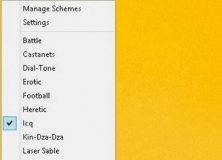


Should the maximum deviation be greater than 15 degrees, then the EV-1 Sensor Core should be installed in another location where it may sense less magnetic deviation. Should the maximum detected deviation be less than 15 degrees (ideally, a single digit value), then heading alignment may be performed. scroll to the very bottom of the displayed autopilot information to find the maximum detected DEVIATION.

Upon completion of the cruise, display the maximum detected deviation (MENU->SET-UP->DIAGNOSTICS->ABOUT PILOT). Until completion of deviation sensing, the autopilot control head will display a progress bar with red or green indicator to aid the operator in identifying whether the vessel's speed and rate of turn (slower is better) is appropriate for detecting sensed deviation. During the cruise, the vessel should be steered through a couple of large figure 8 patterns at a relatively slow rate of turn to permit the autopilot to determine the maximum detected deviation throughout all points of the compass. During the cruise, the vessel speed should be maintained between 3 to 15 kts. Following execution of the Dockside Wizard, the vessel must be taken out for an approximately 15-20 minute cruise.
#SETTING UP UOPILOT SOFTWARE#
When updated with the latest software for Evolution Autopilots, the autopilot control head will display the message "Detecting Magnetics" as a visual indicator that the autopilot system has not yet been able to determine the deviation field sensed by the EV-1/2 Sensor Core. While the Evolution autopilot system does not have a specific Seatrial Calibration program as did prior generations of Raymarine autopilots, the Dockside Wizard must be executed.


 0 kommentar(er)
0 kommentar(er)
